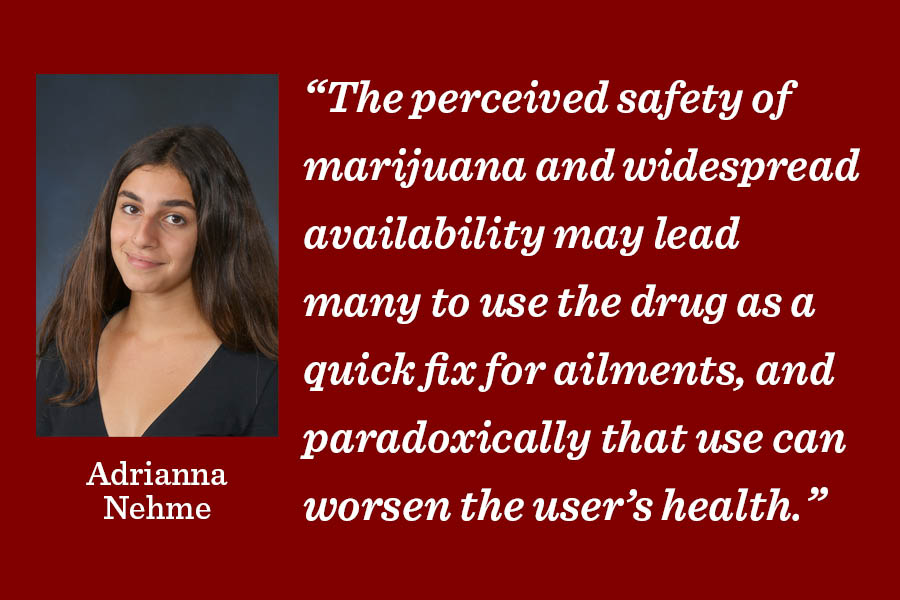Treat marijuana legalization with care
April 16, 2020
On May 31, 2019, the Illinois House voted 66-47 to legalize the use of recreational marijuana. The bill was signed by Governor J.B. Pritzker on June 25, 2019, and on Jan. 1, 2020, people crowded around the dispensaries in Chicago to buy the newly legalized substance.
The legalization of marijuana brings many notable economic benefits, however these short-term benefits are far outweighed by the public health and environmental risks that the substance poses.
Marijuana legalization could indeed boost the economy, and the industry in the United States may exceed billions in revenue by 2025, but on the other hand, hospital visits related to the use of marijuana have increased since the legalization. According to CBS, one factor leading to this increase relates to the marijuana candy bar, which can have four or more times the recommended dose of THC. This could lead to many visits to the ER as a result of overdose, anxiety attacks and other ill effects of consuming edible marijuana. People do not realize that the absorption of THC from edible products is greater than from smoking it and are surprised by the effects. Lack of education about marijuana products and the assumed safety of it is disturbing and shows that health-related outcomes are misunderstood by people.
Growing marijuana is also harmful to the environment. According to the JSTOR Daily, the process results in deforestation, soil erosion, habitat destruction and river diversion. In addition, the plants also require large amounts of water to grow, which is problematic considering different areas in the world that could benefit from this water that is being “wasted” on the plants. This could also reduce the water availability for agriculture and could threaten wildlife species. For growing indoors, large amounts of electricity are required to sustain the plants which emit greenhouse gas emissions that only add the problem of pollution and climate change.
According to Healthline, when taken by pregnant women, the components of the substance can cross the placenta and blood-brain barrier of the fetus. According to the Centers for Disease control and Prevention, newborns can also be exposed to marijuana, which can be present in their mother’s milk. Additionally, use of the substance may also increase the risk of developing disorders such as schizophrenia and depression. Researchers also noticed that recreational marijuana users had strange abnormalities in the shape of their brains. The perceived safety of marijuana and widespread availability may lead many to use the drug as a quick fix for ailments, and paradoxically that use can worsen the user’s health.
Such examples highlight the several negative effects associated with having easier access to marijuana. It appears that the push for legalizing recreational marijuana has been largely guided by the positive financial impact that such legalization can have on local economies. Such financial gains should not divert attention from the health and environmental hazards that are associated with marijuana use.
Governments, health care providers and local authorities need to emphasize such negative aspects of marijuana use either through conferences, education or media campaigns. If not, then the long-term costs of marijuana use can far outweigh any short-term benefits related to financial gains.




























































